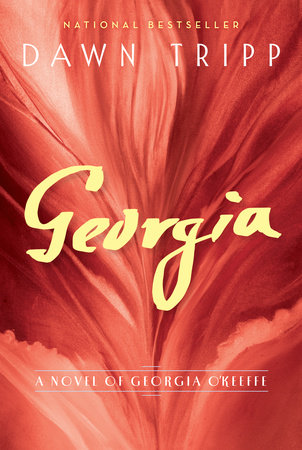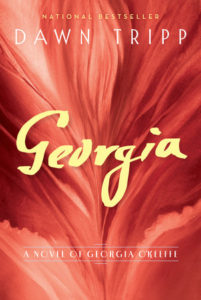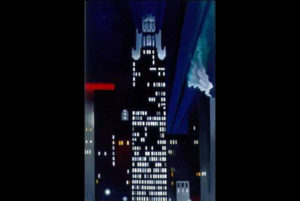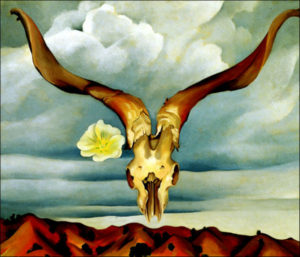Georgia focuses on the period in the artist’s life when she was in a relationship with Alfred Stieglitz. When the photographer first encourages Georgia O’Keeffe and begins courting her via letters from New York, she is overwhelmed. She tries to take it in during sojourns through the Texas night:
“I lie there in the cold quiet, a small though moving at the edges of my mind-the possibility that he is like that open space, vast like these plains, this night, vast enough it seems sometimes to hold me.”
Georgia joins Stieglitz in New York, where he makes a series of nude photographs of her. She’s unself-conscious about them, as they portray someone so beautiful that she speaks of the woman in the photographs in the third person. When Georgia begins to show her work in Stieglitz’s avant-garde art gallery, the public is already familiar with her through the nudes. Every critic references them. The series of giant flower paintings she creates only provide the critics with all the more evidence of her “feminine” nature. No wonder Georgia later so vehemently denied feminists’ interpretation of her flower shapes as vaginal!
In response, Georgia returns to the hard, abstract style she originated in Texas. But Stieglitz advises against painting in this style. He won’t show the abstracts or the city paintings Georgia creates from their apartment window.
And he’s controlling in other ways, like dissuading Georgia from having a child. She feels “cut down if I want too much.” Stieglitz loves her, or his idea of her—her new American painting, her clarity, and strength—so much so that he cannot bear for her to go on painting trips on her own. Yet Georgia can’t bear to be constantly contained.
When Georgia’s independence is too much for him, Stieglitz is unfaithful. After his third affair, Georgia travels to Taos, New Mexico. It’s reminiscent of Texas, and she begins to remember who she was before she met Stieglitz. “Curious, how something as inarguable and simple as wide-open space can rearrange me back into myself,” she thinks. And “…For the first time in a dozen years, it occurs to me that perhaps Stieglitz is not my life, but a detour from it.” Still, Georgia returns to Stieglitz again and again, until the psychic contortions required to fit his image of who she is results in a crisis that convinces her return to Taos.
The author’s lyrical writing matches Georgia’s paintings. Her grasp of Georgia’s character and how it intersects with Stieglitz’s feel utterly authentic. And her descriptions of the process of painting give you the vicarious thrill of being in this artist’s head.
Day after day, it is the desolation of this country that enthralls me. How the wind sweeps the light and throws it into vibrant shifting patterns of color and shadow against the cliffs…I paint, and I am not the woman that he made.
In the end, only the sky is vast enough to hold Georgia. I wish that every young woman who has been told she is complicated or difficult would read this book to learn that—like Georgia—the truth is that she is powerful.



